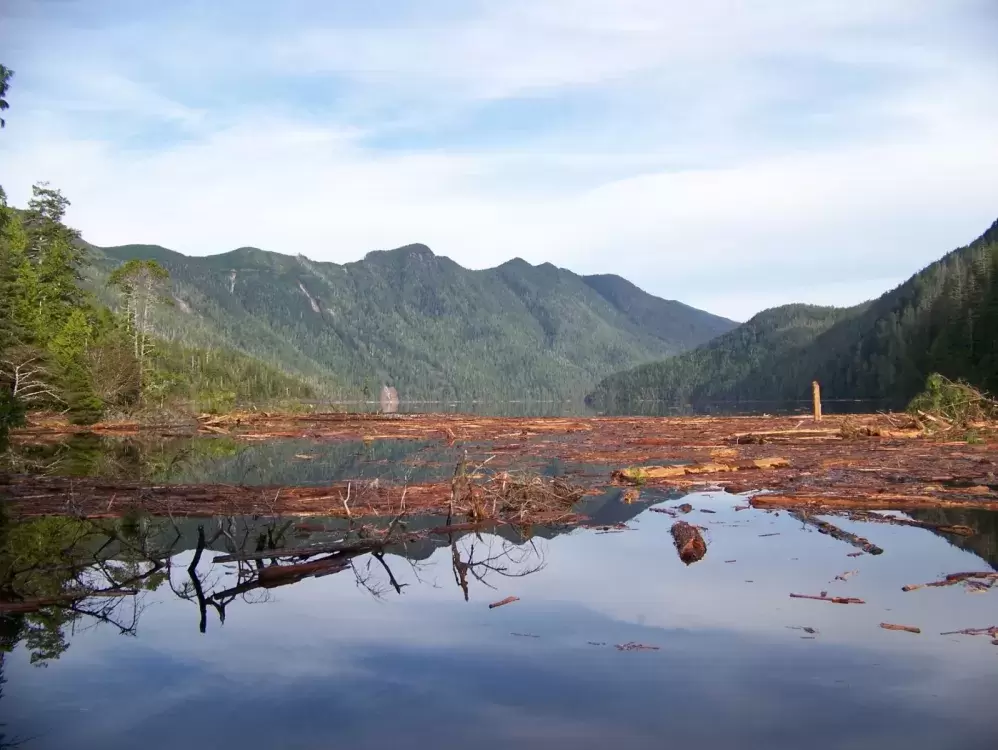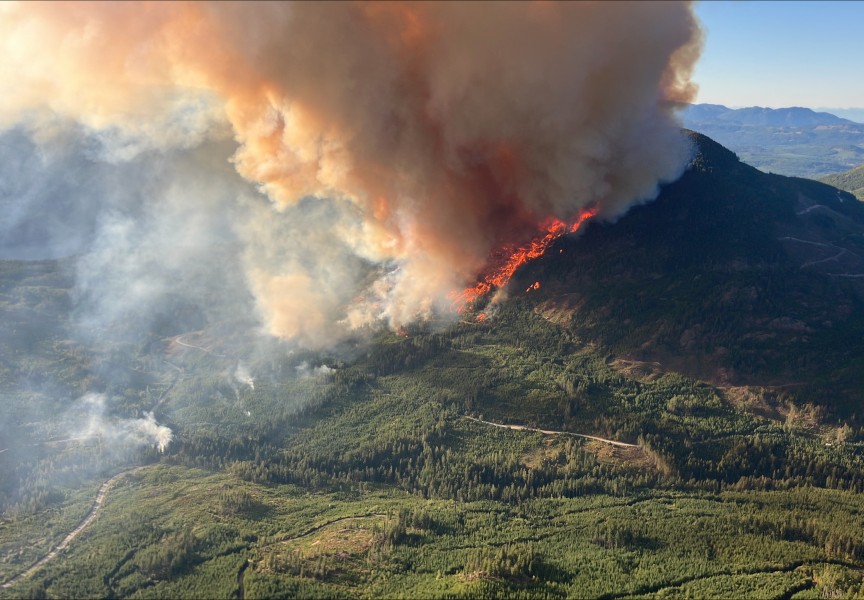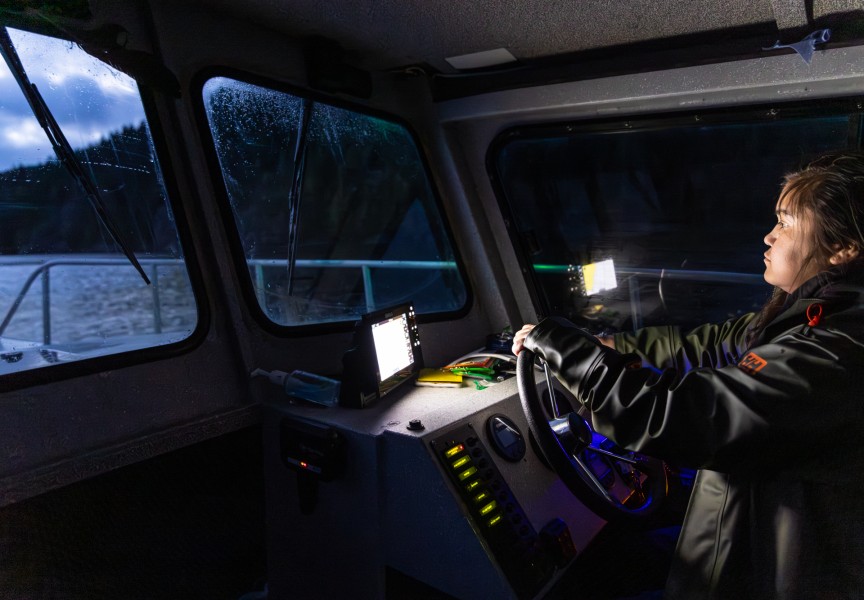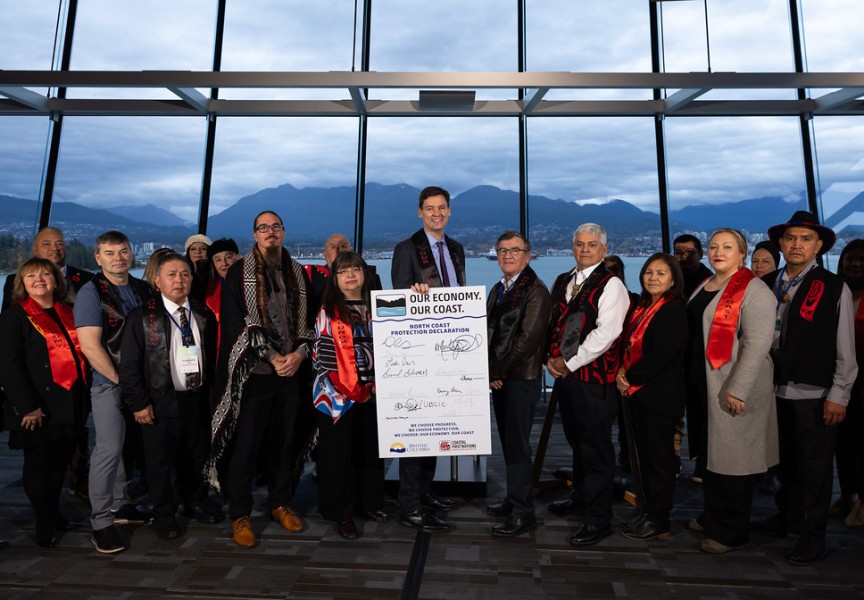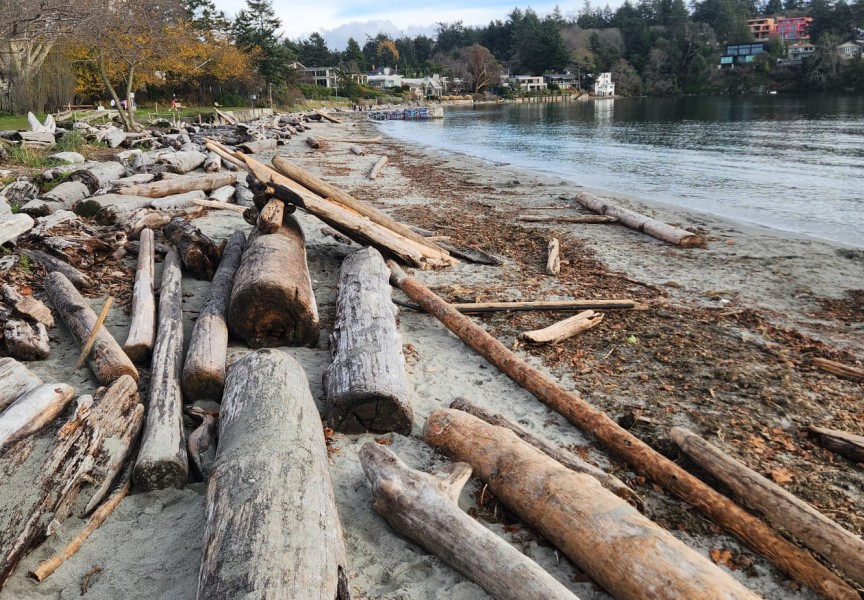Funding through B.C.’s Economic Recovery Plan will help restore critical salmon habitat in the Clayoquot Sound.
Hesquiaht, Ahousaht and Tla-o-qui-aht First Nations are partnering with the Central Westcoast Forest Society (CWFS) to work on the Clayoquot Sound Watershed Recovery Initiative. Along with providing technical training and certification to workers, it will support at least 25 new jobs.
The work will be taking place in the Hesquiaht Harbour, the Atleo River and the Tranquil River. By implementing bioengineering approaches, the BC Ministry of Environment and Climate Change said the project is aimed at stabilizing banks, reducing erosion, and restoring salmon habitat.
“In Hesquiaht, we’ve been focusing a lot on landslide stabilization,” said Jessica Hutchinson, CWFS executive director. “There were a lot of landslides post-logging in the territory that impacted salmon bearing streams by burying them in sediment, rock and debris. We’re working in the upslope areas and the steep terrain trying to stabilize landslides and prevent that sediment and material delivery to the rivers below.”
Terry Dorward, Tla-o-qui-aht Tribal Parks project coordinator, said that combining traditional knowledge with CWFS’s science-based approach creates an ideal partnership.
“Our mandate, our Tla-o-qui-aht vision, is to have healthy rivers producing salmon,” he said. “It goes back to our responsibilities. We’ve been trying to build a conservation economy for some time now and working with the folks at CWFS is the perfect fit.”
Work in the Tranquil River is planned to begin in June and will focus on a critical portion of habitat for Chinook salmon, said Hutchinson.
“It's their key spawning area,” she said. “And again, it's been impacted by logging that was done over 50 years ago but has yet to recover. So, we're [building] some in-stream structures that will create pools and more holding habitat for adult salmon when they return to the river.”
As part of the initiative, CWFS worked with the three nations to determine their individual priorities for training and employment. Currently, 10 participants are taking part in an environmental technician certificate program at the Best Western Plus Tin Wis Resort. The five-week program offers foundational field skills, familiarizing students with survey methods, such as electrofishing.
Offered on a first-come-first-serve basis, the training is not only free, but participants are being compensated to attend, said Mandala Smulders, CWFS director of operations.
“We've had way more interest than we had space for,” she said. “Hopefully we can find more funding and run it again.”
Nine jobs will be created in Ahousaht to help restore the Anderson Creek watershed by revitalizing spawning habitat for Chum salmon and protecting the community’s drinking water, said the ministry.
“Through a combination of restoration work and water monitoring activities, Ahousaht [First] Nation and neighbouring communities will be prepared to make informed water and land use decisions that support a healthy ecosystem,” said the ministry.
The Clayoquot Sound Watershed Recovery Initiative is one of 70 watershed and wetland initiatives recently announced by the province. Through StrongerBC, $27-million has been allocated to ensure B.C.’s watersheds remain healthy and resilient, while creating 750 new jobs.
“The people of the west coast love where we live, but we know it takes work to keep it as beautiful as it is,” said Josie Osborne, MLA for Mid Island-Pacific Rim, in a release. “This partnership between the Central Westcoast Forest Society and the Hesquiaht, Ahousaht and Tla-o-qui-aht First Nations will go a long way in protecting and restoring salmon habitat and strengthening river banks while creating jobs that people can be proud of.”
CWFS and the partnering nations will be working on the projects throughout the summer and fall.
“It’s helping us build our partnerships,” said Smulders. “And strengthen the restoration expertise on the coast.”

